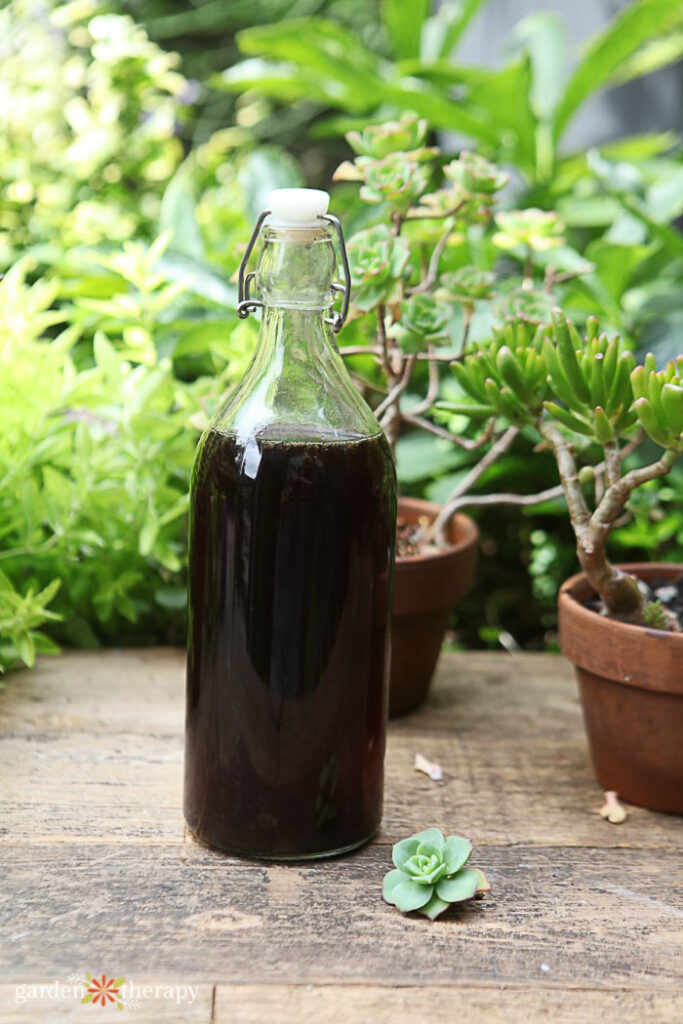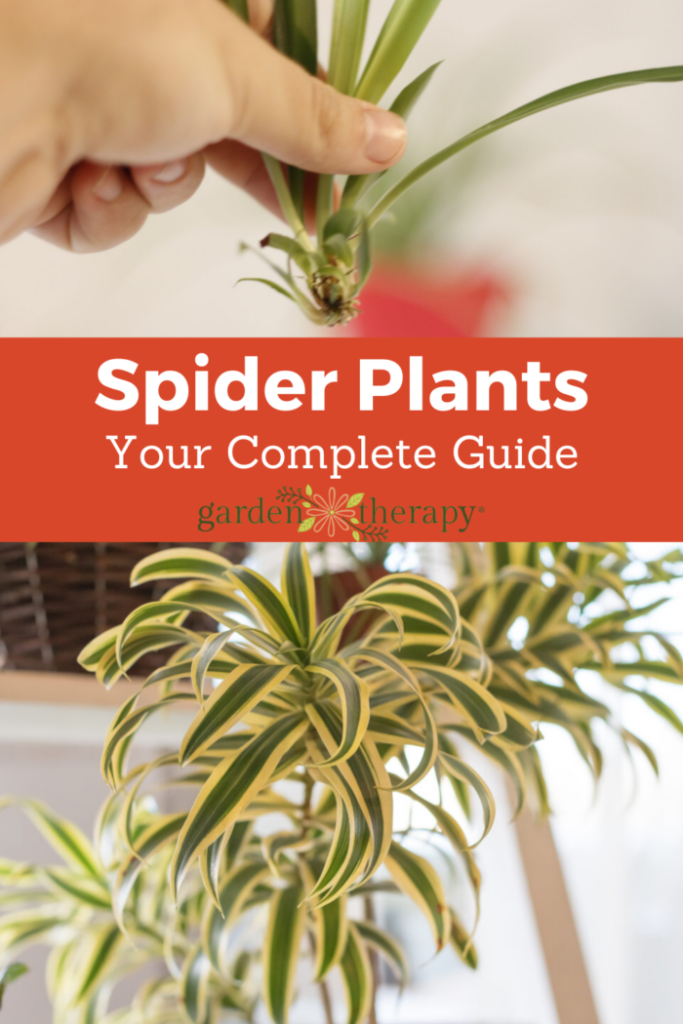Though this vibrant plant has a creepy-crawly name, no plant-lover should shy away from the graceful spider plant. This arching plant is perfect for beginning gardeners. Not only is it easy to care for, but spider plants make a beautiful hanging or tabletop plant. Good for beauty and good for you—what’s not to love?

The spider plant, also known as chlorophytum comosum or spider ivy, gets its name from its spider-like shape and ability to grow baby plants from trailing stems. Known for their green and white, almost ribbon-like leaves and air purifying qualities, these plants are a great addition to any home jungle.
These plants are originally native to tropical and southern Africa, but they thrive all over the world and make great houseplants for homes in a variety of climates. In the warmer months, you might even see these plants branch out and bloom small white flowers!
This post will cover…
- Spider Plants Care
- Location
- Sun
- Water
- Soil
- Fertilizer
- Common Issues
- How to Propagate Spider Plants
- Frequently Asked Questions About Spider Plants
- More Houseplants to Grow
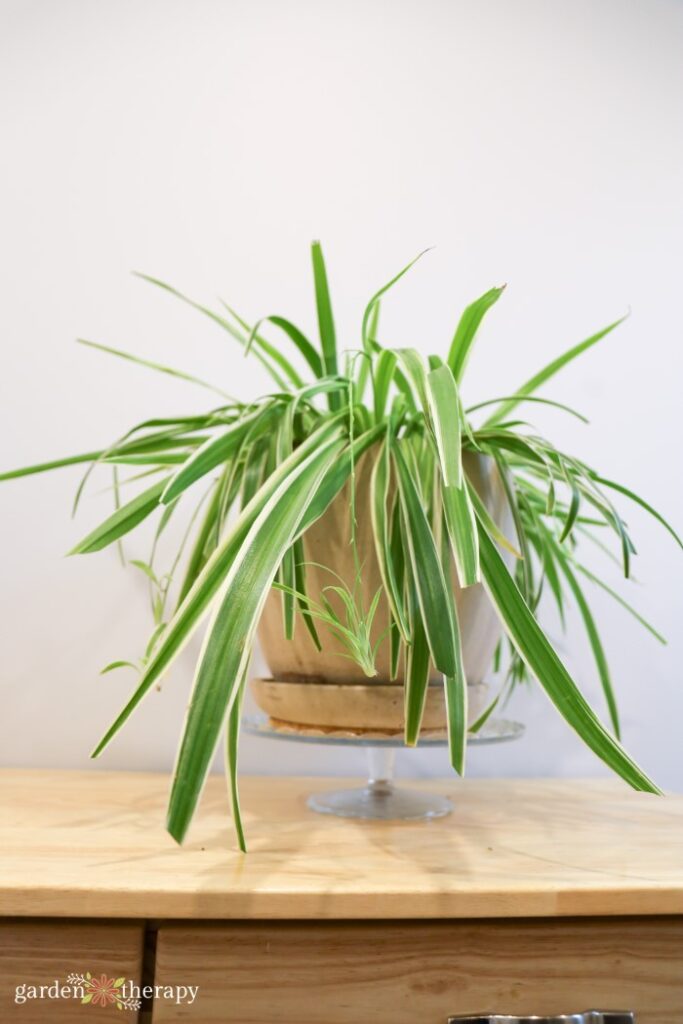
Spider Plants Care
Spider plants are easy peasy houseplants to take care of. But to really let your spider plant flourish and be healthy, you’ll want to make sure to try and follow these care tips.
Location
Spider plants dream of bright, indirect light and a little humidity, but they’ll grow happily in a variety of conditions. They love hanging planters and tabletop pots, so they make perfect décor in any empty spot you may have in your home.
The spider plant grows best in temperatures between 18°C – 32°C. They can grow in temperatures as low as 2°C, so no matter where you are, the spider plant will likely be a great plant for you.
A bright bathroom or living room would be ideal for these plants, but if you have other ideas, they won’t complain!
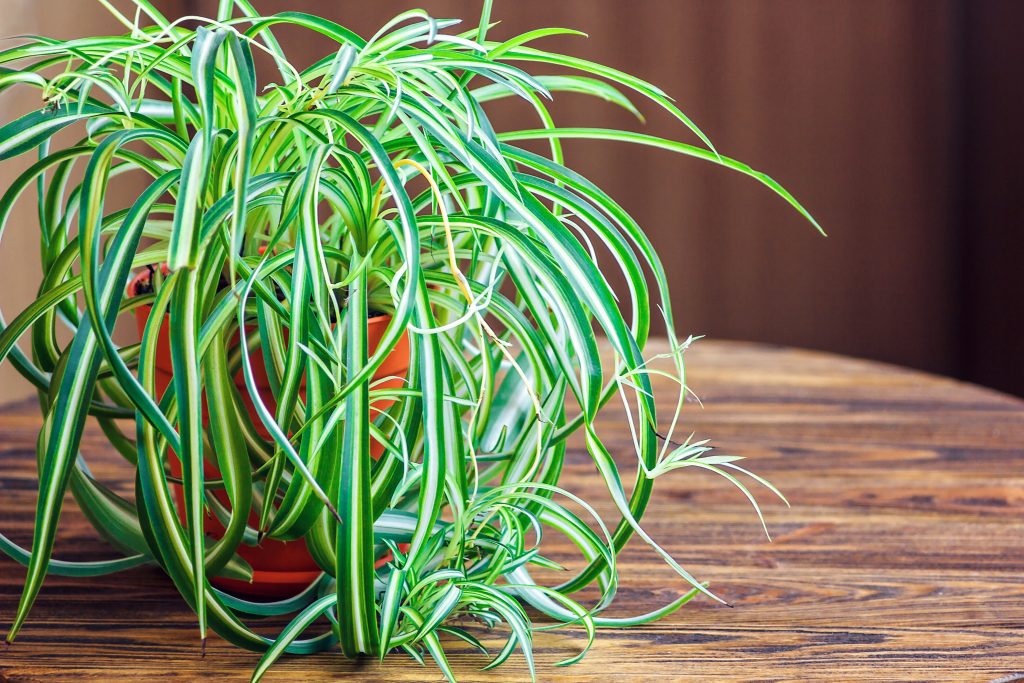
Sun
If you only have space in lower light spots in your home, the spider plant won’t mind. However, they’ll thrive the most in bright indirect light. Given a bright spot in your home, you might notice your spider plant’s green and white stripes become more prominent.
Be careful, as direct sunlight will burn the leaves. If you only have windows with direct sunlight, investing in a sheer curtain is an easy way to give your spider plant shelter from the sun.
Water
The spider plant will thank you if you let about half the soil dry out between waterings. When it’s time to water, give it a generous shower, allowing all excess water to drain out of the pot and discarding any that might have accumulated in a saucer.
Spider plants don’t mind a drier environment, but they’re happiest with a little bit of humidity, so investing in a mister or humidifier for these beauties is a good idea if you’re looking to give your spider plant the very best.
Soil
Because the spider plant is so tolerant, it will do alright with most types of soil as long as your pot has good drainage and you don’t overwater. Of course, I always recommend well-draining soil for houseplants to give your plant the best chance of fighting off root rot and sogginess.
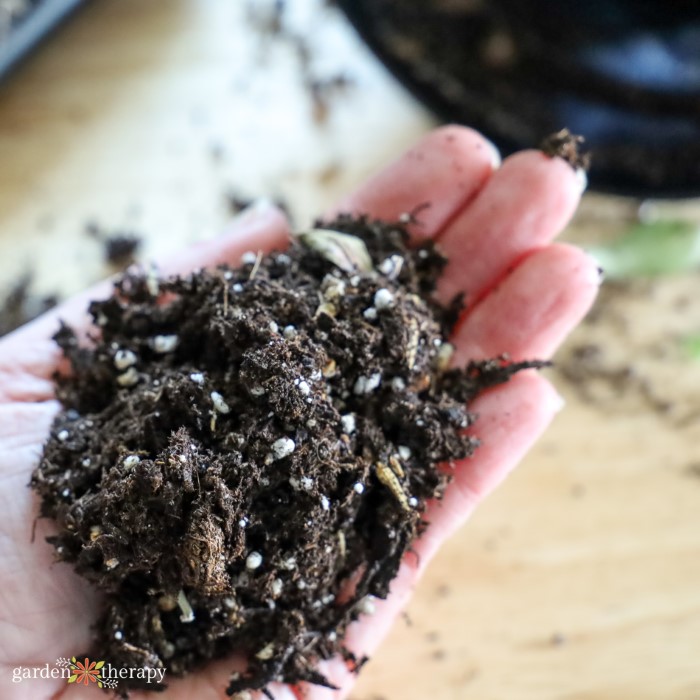
Fertilizer
Over-fertilization can cause brown tips to appear on the leaves of your spider plant, so I recommend fertilizing sparingly. Try giving spider plants fertilizer every 2-3 weeks during the growing season (spring and summer), and if you start to see the leaves brown, hold off on fertilizing for a couple more weeks before trying again.
Common Issues
Spider plants are notorious for developing brown bits at the tips of their leaves. Try not to panic—this is very normal and does not harm the plant. The spider plant is sensitive to the fluoride that is often in our water, a chemical that can cause a salt buildup in the soil. If you’re looking to go the extra mile for your plant, you can try watering with filtered water or even rainwater!
Another cause of brown tips might be underwatering. If you let your spider plant dry out too much between waterings the tips of the leaves will go first, but with a healthy drink and a good drain you should see your plant bounce back in no time.

How to Propagate Spider Plants
Propagation is at its easiest with the beloved spider plant. During the warmer months, these plants will grow long, trailing stems that put out small white flowers that eventually become spider plant babies, also called offsets or pups. They look like baby spiders hanging onto the mother plant.
When you see these spider plant babies grow to at least an inch tall, clip them free of the mother plant with clean scissors and transplant them into fresh soil or water to develop roots.
A mature spider plant will often grow many offsets at the same time, so if your house is full, these baby plants make excellent gifts to all the plant-lovers in your life!
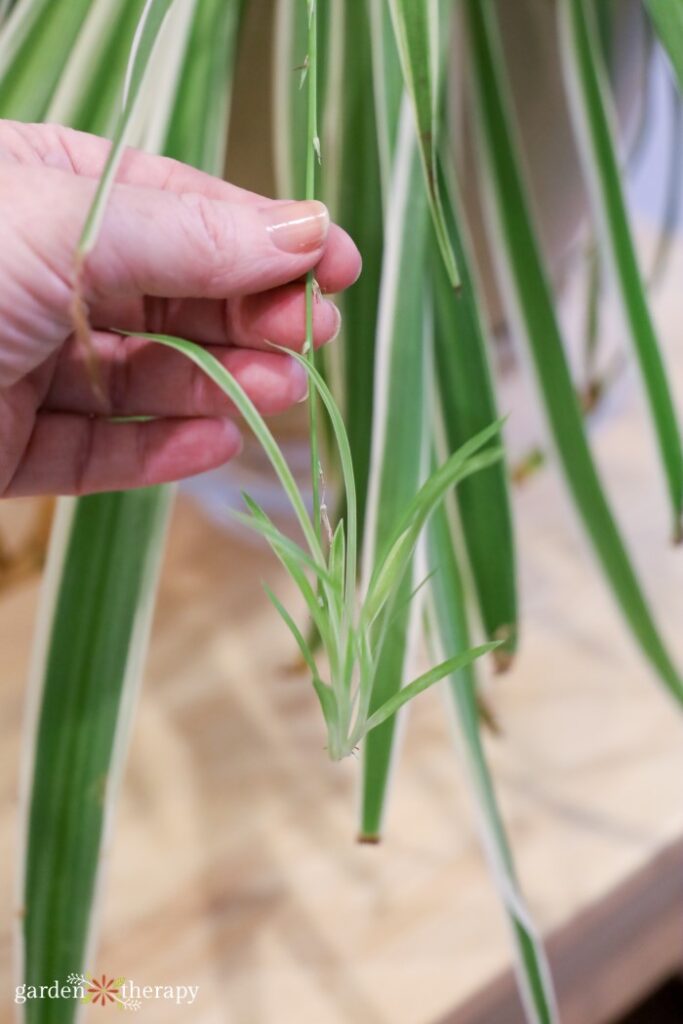
Frequently Asked Questions About Spider Plants
The spider plant is not toxic to cats, but it is good to note that sometimes cats will snack on plants to settle their stomachs, so you might notice them throw up after having a nibble.
For those of you with curious furry friends, I recommend keeping your spider plant in a hanging pot that can be kept out of reach of your cats, but if they do manage to reach it, they’re in no danger!
Spider plants are powerful air purifiers! They can absorb and filter toxins in the air, such as formaldehyde, ammonia, and xylene. However, you will need a significant amount of houseplants to really notice the effects.
They also increase the humidity of your home. If you’ve hung your spider plant near a window, you might see condensation on the glass after a little while, emitted from the spider plant.
They’re one of the easiest plants to grow for beginners and you will be rewarded with plenty of spider plant babies to cut and turn into more plants. They’re a win-win-win!
If you’re looking for some leafy additions to your bedroom, the spider plant is a great choice. Because of its air purifying superpowers, hanging or placing a spider plant in your bedroom is a great way to make sure the air you breathe at night is clean, allowing you to sleep soundly.
Plus, who wouldn’t want to see these thriving beauties before going to sleep?
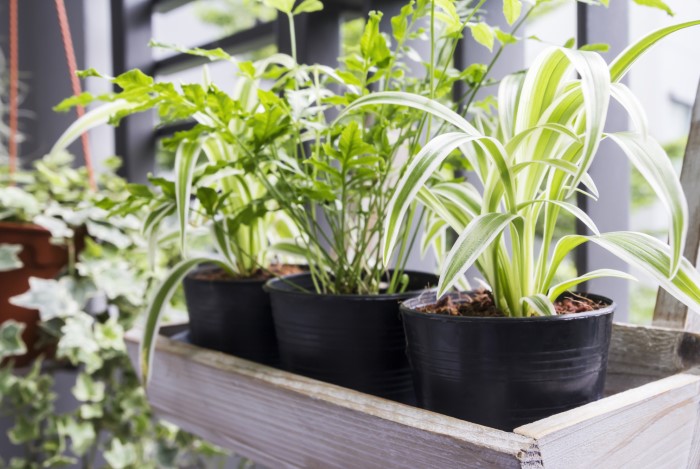
That should be everything you need to know to have a happy, healthy spider plant in your home. Be sure to let me know of any other questions or concerns you have in the comments down below.

